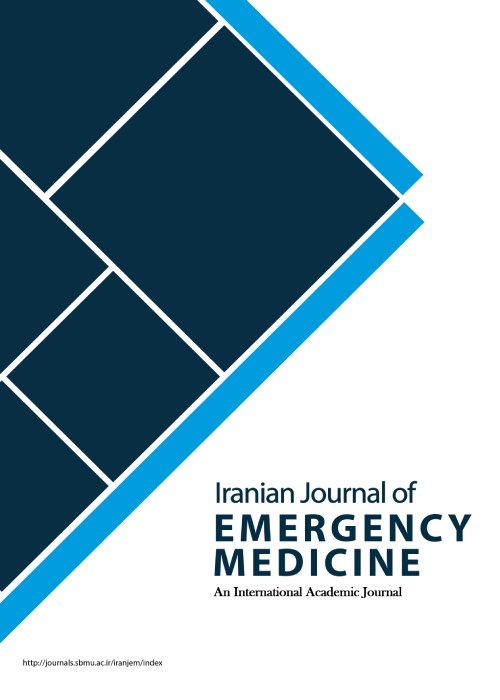Preventing Seizure due to Head Trauma in Patients Visiting Emergency Department
Author(s):
Article Type:
Letter (بدون رتبه معتبر)
Abstract:
Head trauma is a known cause of seizure and about 10% of patients with severe or moderate head trauma are affected with seizure. Preventing and controlling seizure after head trauma is of great importance for minimizing secondary brain injuries. Depending on their time of occurrence, post-trauma seizures are divided into 3 types, namely immediate seizures, early seizures, and late seizures. Immediate seizures occur within less than 24 hours after the trauma, while early seizures happen in less than a week and late seizures happen more than a week after trauma. Phenytoin is an antiepileptic drug that is widely prescribed for preventing seizure in trauma patients. This drug has nonlinear pharmacokinetics even in therapeutic doses and its prescription requires cardiac monitoring, continuous monitoring of the drugs plasma levels and dose adjustment. Studies have shown that phenytoin prevents early seizures but is not effective in decreasing late seizures. On the other hand, in most cases, due to pharmacokinetic changes in patients with head trauma, blood concentration of phenytoin is outside the therapeutic range and determining its serum levels cannot always be done. Therefore, finding replacement treatments for preventing seizure in these patients is necessary. Sodium valproate is an antiepileptic drug that is usually used along with other drugs for treating different types of epilepsy. This drug decreases electric discharges in the brain. Sodium valproate is also used for prevention of seizure attacks. The side effects of this drug are rare and mostly unimportant. The authors of this letter randomly divided 70 patients presenting to emergency department with severe head trauma (consciousness level of 8 or less on Glasgow coma scale) with the mean age of 36.41 ± 14.81 years (18 64) into 2 groups of 35 and prescribed phenytoin for 1 group and sodium valproate for the other as antiepileptic drugs and monitored them for 6 hours (91.4% male). The 2 groups were not significantly different regarding baseline characteristics. The results of this study showed that out of the 5 patients who had seizure during the first 6 hours, all 5 were in the group receiving phenytoin. It seems that before reaching a conclusion in this regard, studies with larger sample sizes and longer follow-up periods are required for comparing the efficiency and side effects of the mentioned drugs in prevention of seizure due to trauma.
Language:
Persian
Published:
Iranian Journal of Emergency medicine, Volume:5 Issue: 1, 2018
Page:
13
https://magiran.com/p1792308
دانلود و مطالعه متن این مقاله با یکی از روشهای زیر امکان پذیر است:
اشتراک شخصی
با عضویت و پرداخت آنلاین حق اشتراک یکساله به مبلغ 1,390,000ريال میتوانید 70 عنوان مطلب دانلود کنید!
اشتراک سازمانی
به کتابخانه دانشگاه یا محل کار خود پیشنهاد کنید تا اشتراک سازمانی این پایگاه را برای دسترسی نامحدود همه کاربران به متن مطالب تهیه نمایند!
توجه!
- حق عضویت دریافتی صرف حمایت از نشریات عضو و نگهداری، تکمیل و توسعه مگیران میشود.
- پرداخت حق اشتراک و دانلود مقالات اجازه بازنشر آن در سایر رسانههای چاپی و دیجیتال را به کاربر نمیدهد.
In order to view content subscription is required
Personal subscription
Subscribe magiran.com for 70 € euros via PayPal and download 70 articles during a year.
Organization subscription
Please contact us to subscribe your university or library for unlimited access!


